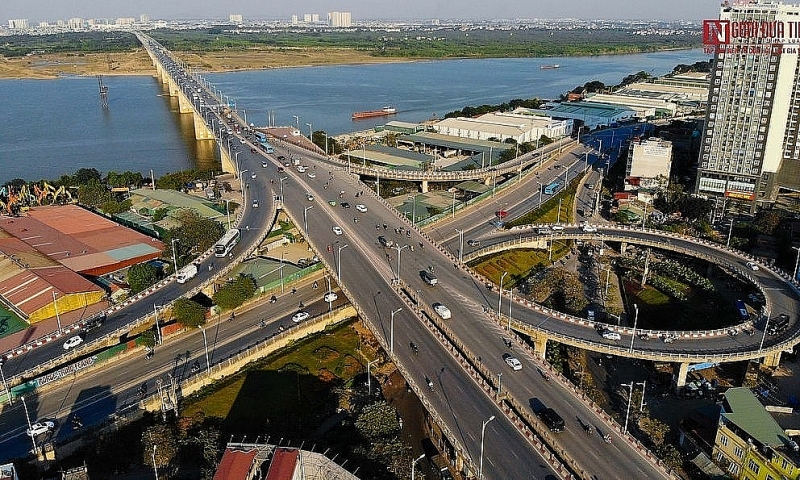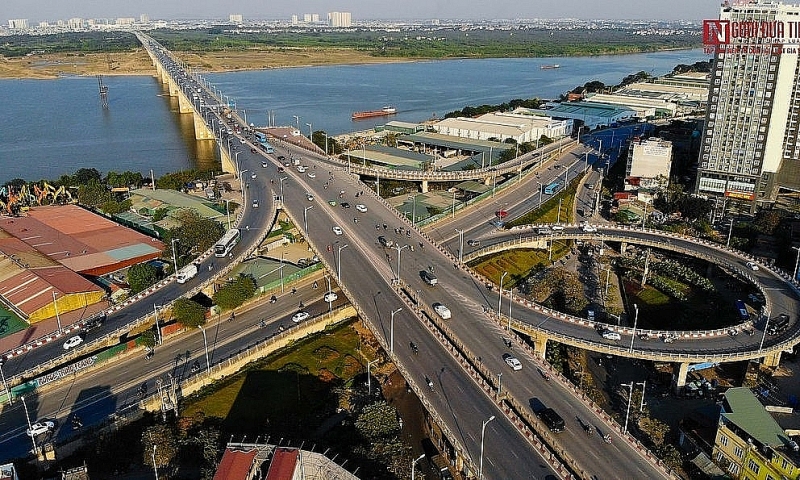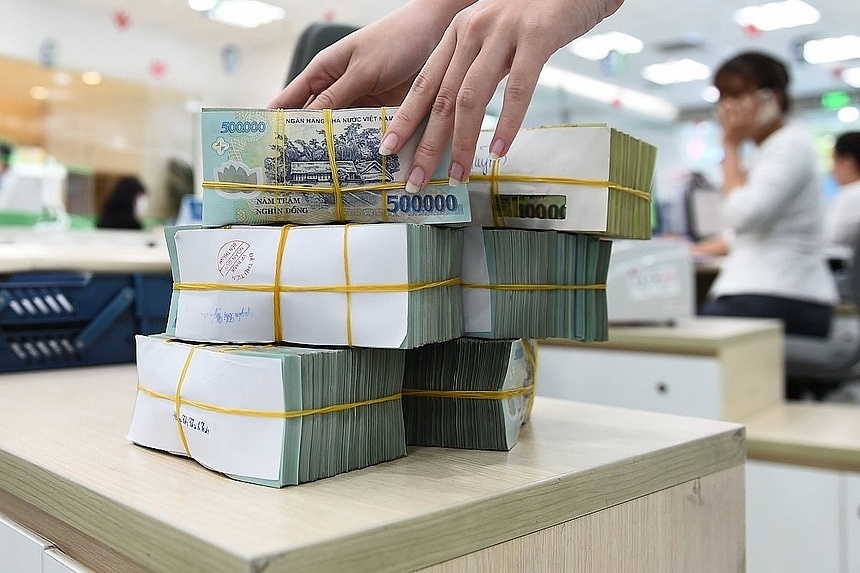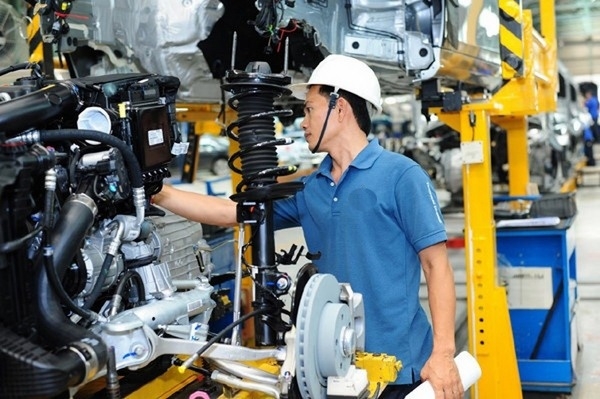Breakthrough opportunities for the Red River Delta region
 |
| The socio-economic development of the Red River Delta has not been commensurate with the potential and available advantages of localities in the region. Photo: Internet. |
Lack of regional linkage
According to Deputy Minister of Planning and Investment Tran Duy Dong, after 15 years of implementing Resolution No. 54-NQ/TW of the Politburo, the Red River Delta region has achieved many positive results. Specifically, the average economic growth in 2005-2020 reached 7.94% per year, higher than the national average. As a result, the economic scale increased rapidly in 2020, 7.75 times higher than in 2005, accounting for 29.4% of the country's GDP. In addition, state budget revenue increased significantly, 9.5 times higher than in 2005, 6.6 times higher than the national average, accounting for 32.7% of total State budget revenue.
Traffic and transport infrastructure had developed rapidly, synchronously, and modernly and were good over other regions across the country, converging all five modes of transport. As a result, urban development increased rapidly, and the urbanization rate by 2021 reached over 41% (ranking two-sixths in economic regions after the Southeast).
Besides, the Red River Delta was also a region with a strong and dynamic private economic sector and the second-largest number of enterprises in the country. Therefore, attracting foreign direct investment (FDI) of this region ranked second in the country, accounting for 31.4% of the total FDI capital in the country, with the appearance of many leading corporations in the world, such as Samsung, LG, Canon… , Hanoi, Hai Phong and Bac Ninh were always among the top 10 localities with the leading total FDI capital in the country.
However, besides the achieved results, according to the Ministry of Planning and Investment, the socio-economic development of the Red River Delta had not been commensurate with the potential and available advantages of localities in the region.
"This is reflected in the slow economic transition, uneven development of localities, growth depended on capital, labour and natural resources; State budget revenue was unsustainable and depended heavily on FDI enterprises. The linkage and cooperation among localities in the region are not close, and the difference in development level among the two sub-regions and some localities in the region is quite large. Links in infrastructure development such as ring roads, radial routes, routes connecting seaports, airports and international border gates are not effective", emphasized the Deputy Minister of Planning and Investment.
 |
| The socio-economic development of the Red River Delta has not been commensurate with the potential and available advantages of localities in the region. Photo: Internet. |
Transforming potential into development motivation
In Resolution No. 14/NQ-CP dated February 8, 2023, of the Government, promulgating the Action Program to implement Resolution No. 30-NQ/TW of the Politburo, the Government set specific targets for development in the Red River Delta until 2030. Specifically, the average GRDP growth in 2021-2030 will reach about 9%/year. By 2030, regional GRDP will increase about 3 times compared to 2020 (current prices), of which agriculture, forestry and fishery will account for about 3.5%, industry and construction will account for about 47%, and services will account for 41%, product tax excepting subsidies will account for about 8.5%. GRDP per capita is about VND 274 million/person/year.
The average growth rate of social labour productivity reached more than 7%. The average contribution of total factor productivity (TFP) to growth in 2021-2030 is 55%. The digital economy reaches about 35% of the GRDP. The urbanization rate reaches over 55%.
In the Action Program, the Government has set out 21 specific economic, social and environmental targets by 2030, 10 groups of key tasks and solutions, 36 specific tasks and 20 infrastructure investment projects in the Red River Delta to help the region develop breakthroughs.
To achieve the set goals, Prime Minister Pham Minh Chinh requested to continue to review and perfect legal regulations, mechanisms and policies on regional linkage synchronously, consistently and effectively. Doing well the planning for 2021-2030, with a vision to 2050 coordinate and manage uniformly, ensuring the linkage, synchronization, unity, efficiency and sustainable development; soon complete the regional planning in 2023.
Promoting regional economic development, promoting economic restructuring, and developing the marine economy. Reasonable distribution of industrial space according to economic corridors; industrial corridor, associated with seaports, highways and national highways connecting with neighbouring regions. Diversifying markets, products, and supply chains. Strongly developing the marine economy towards green growth, biodiversity conservation, and marine ecosystems.
Regarding urban systems and socio-economic infrastructure development, the Prime Minister requested the development of a modern, innovative, sustaining network and adaptation to climate change. Forming urban chains, urban chains belonging to economic corridors associated with industrial development and logistics services. Prioritizing resources for building a synchronous and modern transport system with intra-regional, inter-regional and international connections; developing multimodal transport.
Regarding the development of science and technology, innovation and digital transformation, the Prime Minister asked to develop the region into a science and technology centre associated with innovation and leading digital transformation of the country. Building and developing zones and centres for startups, innovation, artificial intelligence, and high-tech parks.
Related News

Outlook for lending rates in 2025?
15:20 | 31/12/2024 Finance

Industrial production maintains rapid and throughout bounceback
15:20 | 31/12/2024 Import-Export

Ho Chi Minh City achieves record state revenue of over VND500 trillion in 2024
10:33 | 10/12/2024 Finance

Multiple drivers propel positive growth in budget revenue
10:33 | 05/12/2024 Finance
Latest News

Việt Nam tightens fruit inspections after warning from China
08:01 | 15/01/2025 Import-Export

Brand building key to elevate Vietnamese fruit and vegetable sector: experts
08:00 | 15/01/2025 Import-Export

Freight transport via China-Việt Nam cross-border trains posts rapid growth
08:01 | 13/01/2025 Import-Export

Vietnamese retail industry expects bright future ahead
06:22 | 11/01/2025 Import-Export
More News

Complying with regulations of each market for smooth fruit and vegetable exports
13:06 | 09/01/2025 Import-Export

Fruit and vegetable industry aims for $10 billion in exports by 2030
15:12 | 07/01/2025 Import-Export

GDP grows by over 7 per cent, exceeds target for 2024
15:11 | 07/01/2025 Import-Export

Vietnamese pepper: decline in volume, surge in value
15:10 | 07/01/2025 Import-Export

Việt Nam maintains position as RoK’s third largest trading partner
15:09 | 07/01/2025 Import-Export

Greater efforts to be made for stronger cooperation with European-American market
15:08 | 06/01/2025 Import-Export

Leather, footwear industry aims to gain export growth of 10% in 2025
15:06 | 06/01/2025 Import-Export

Grasping the green transformation trend - A survival opportunity for Vietnamese Enterprises
14:53 | 06/01/2025 Import-Export

Việt Nam to complete database of five domestic manufacturing industries in 2026
20:57 | 05/01/2025 Import-Export
Your care

Việt Nam tightens fruit inspections after warning from China
08:01 | 15/01/2025 Import-Export

Brand building key to elevate Vietnamese fruit and vegetable sector: experts
08:00 | 15/01/2025 Import-Export

Freight transport via China-Việt Nam cross-border trains posts rapid growth
08:01 | 13/01/2025 Import-Export

Vietnamese retail industry expects bright future ahead
06:22 | 11/01/2025 Import-Export

Complying with regulations of each market for smooth fruit and vegetable exports
13:06 | 09/01/2025 Import-Export
